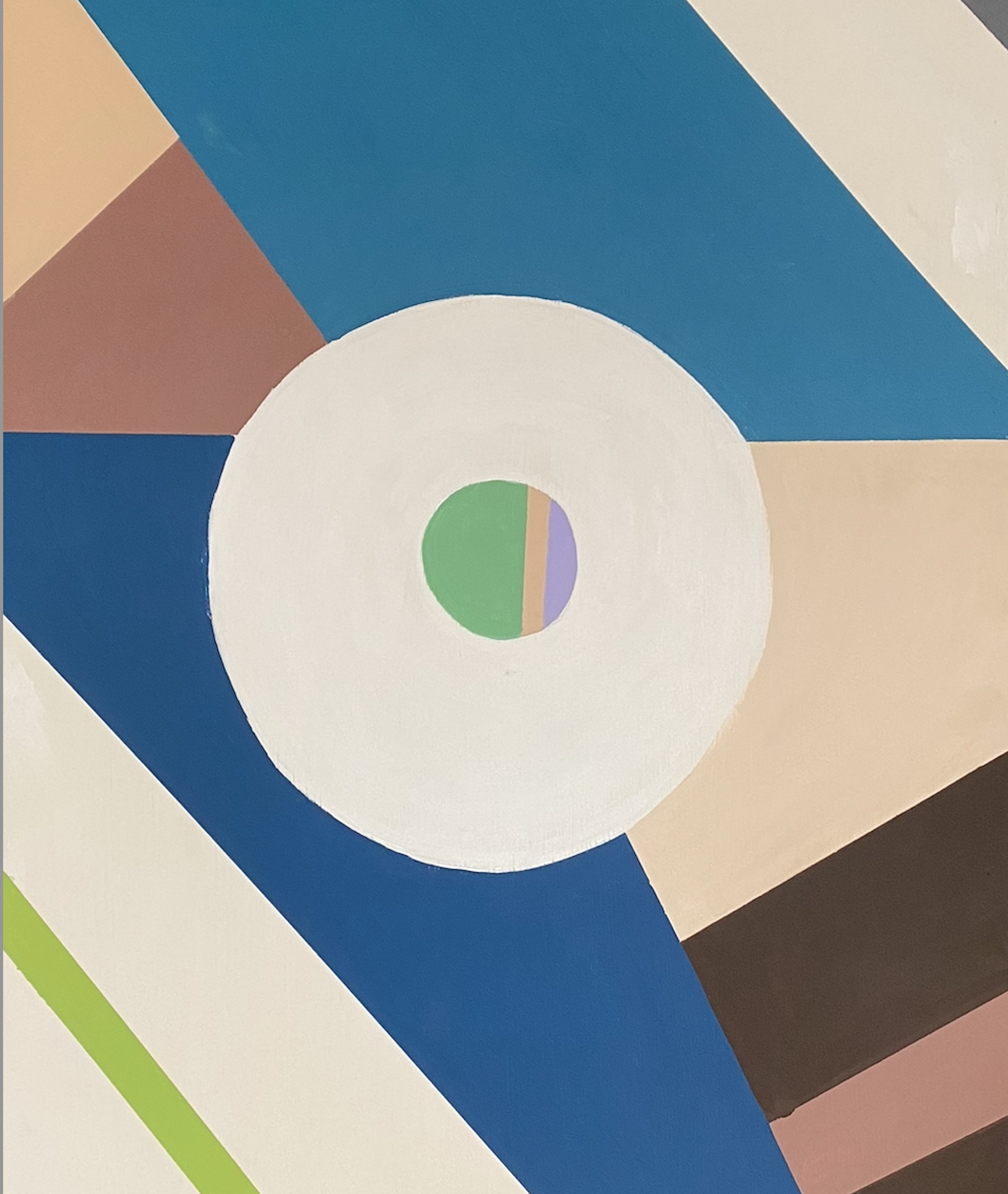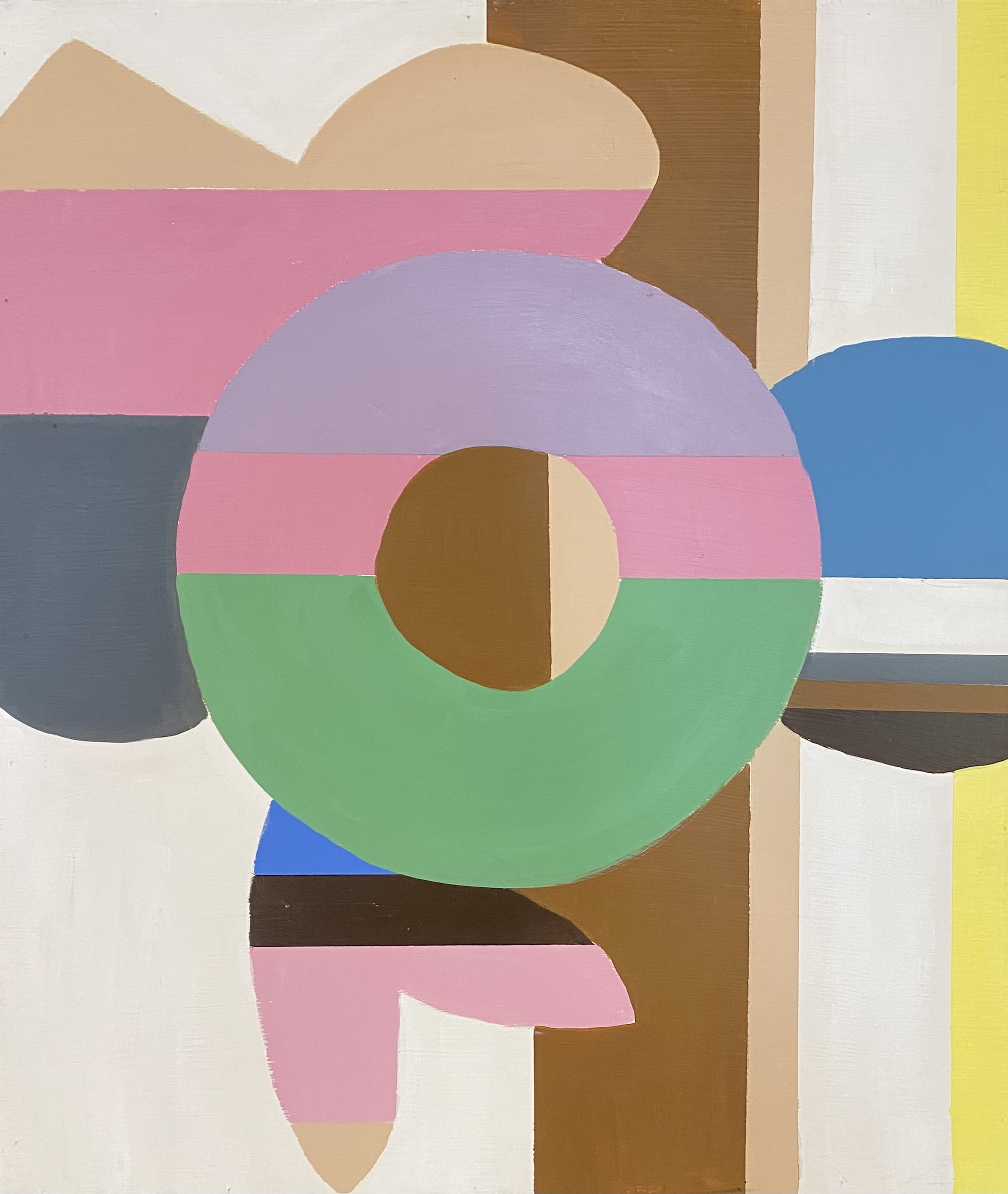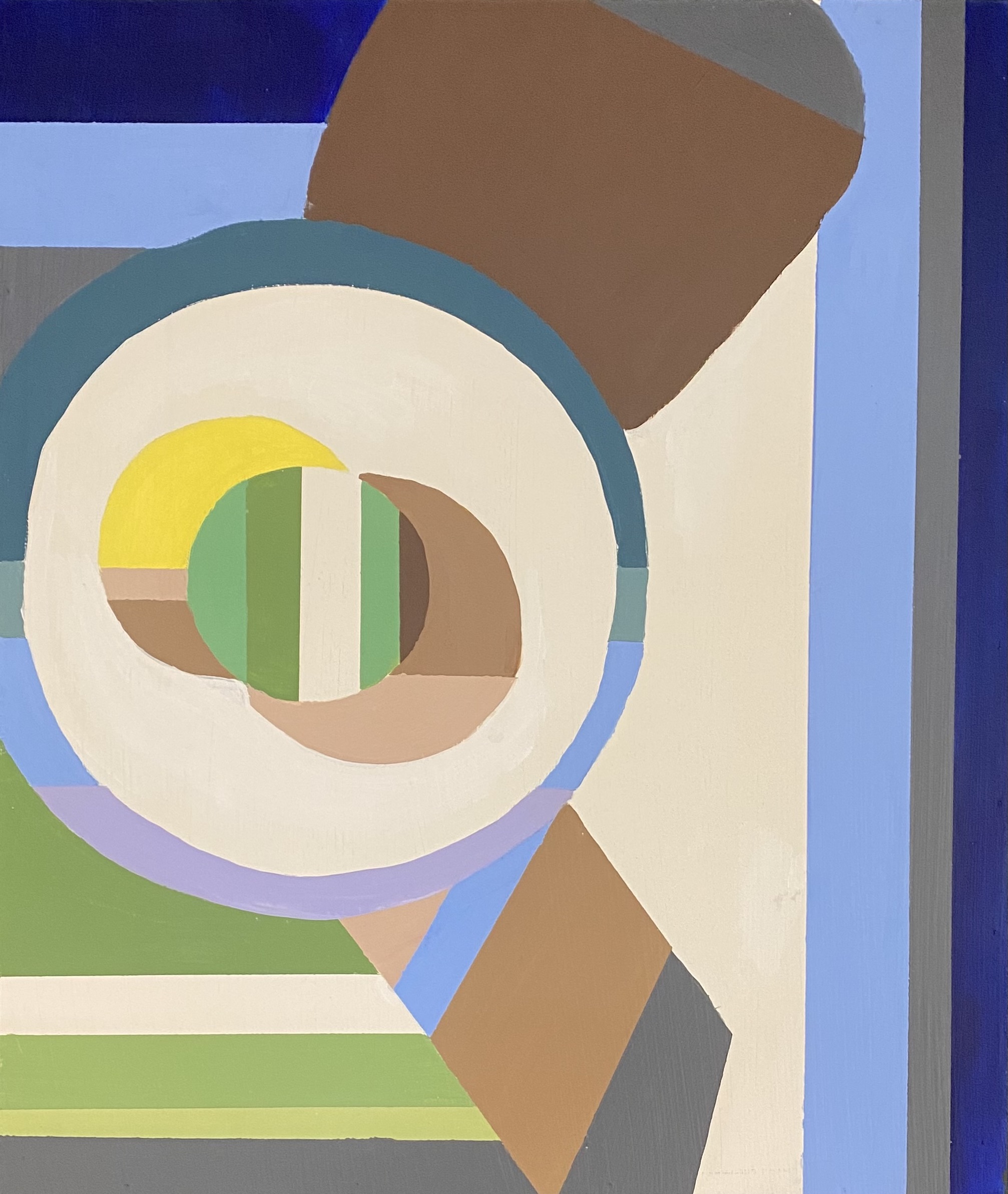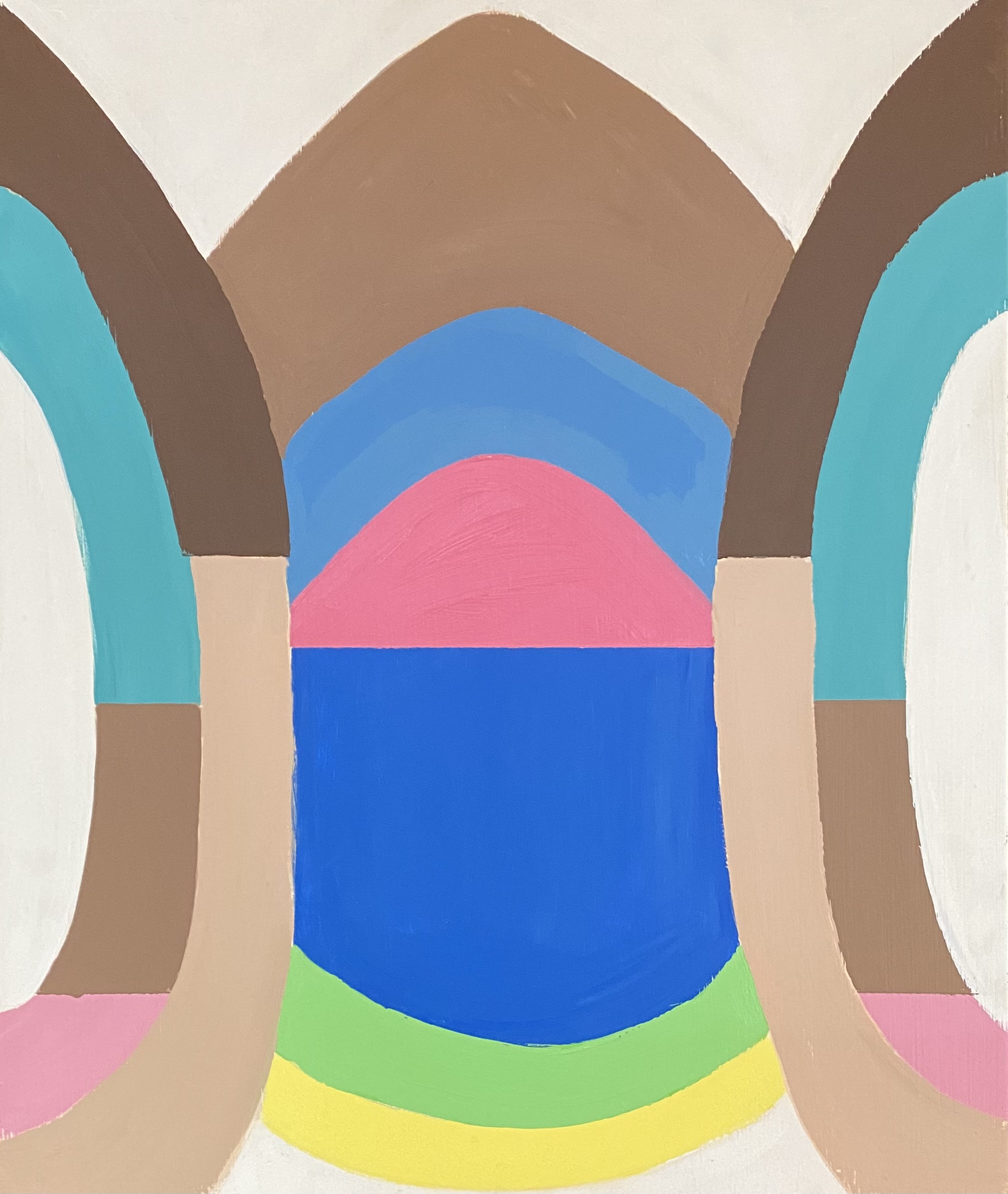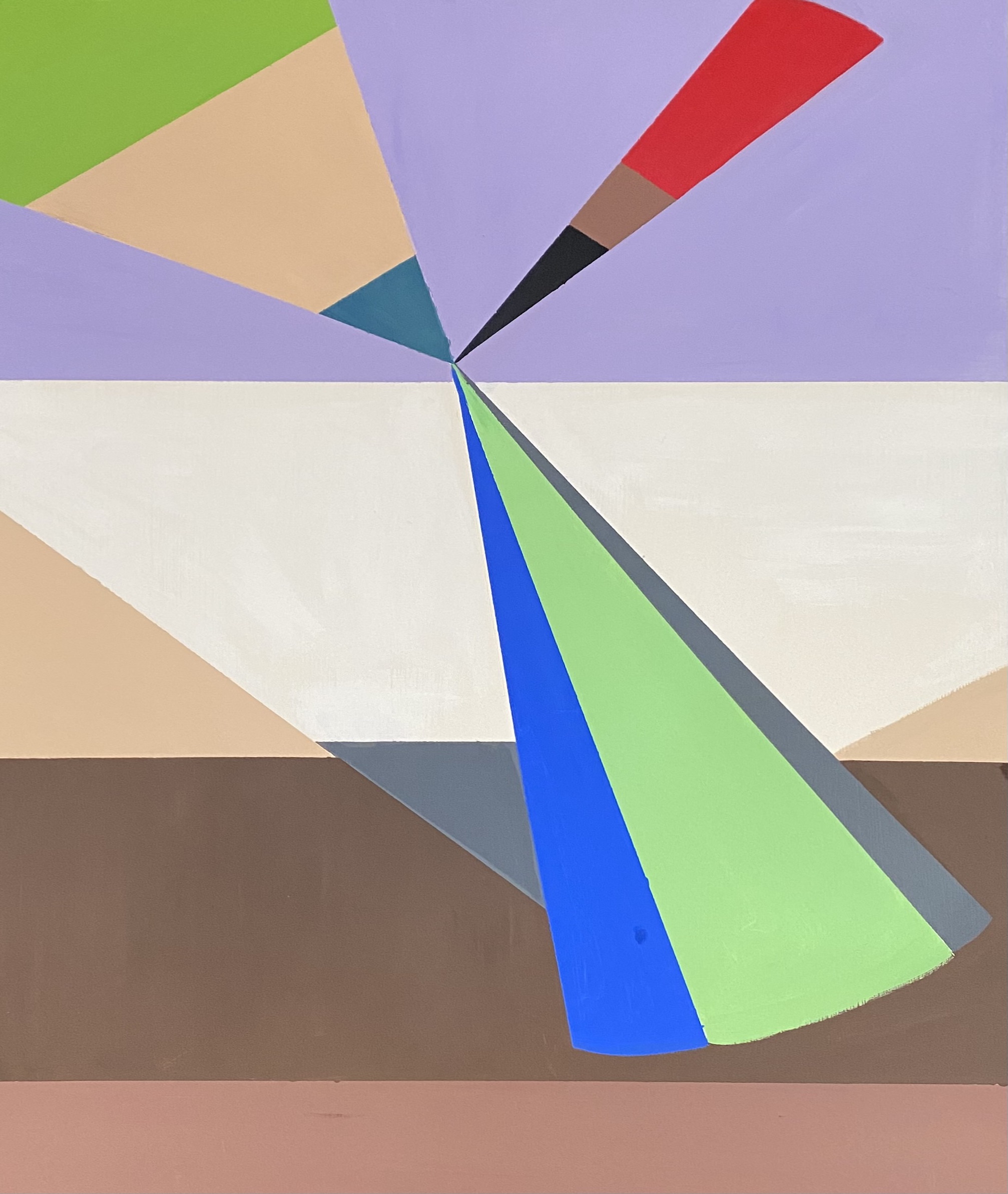Historical and Modern Context
Placing the Social Self in a History of Abstraction and Today
In the history of abstraction, geometric representations and symbolic forms have shown themselves as key components of expressing spirituality and deeper meaning. This aspect of abstraction can especially be seen in the 19th and 20th centuries when an emphasis was placed on simple, reduced forms to convey spiritual ideas in connection with visual imagery. Artists of this period were intrigued by the ability of art to connect with other human senses and perceptions, such as music and emotion. By viewing the human experience through the lens of the soul and environmental vibrations, the formal qualities of color and form developed into crucial focal points of abstract works during this movement. This idea of cosmic imagery can be seen in various compositions within the references to concentric circles, triangles, and mandalas. The incorporation of these forms calls back to mystical concepts related to the oneness of the universe, the existence of paired-opposites for each entity, and the emphasis on the realness of imagination. Due to the complex and otherworldly nature of these ideas, symbols and geometrical forms became prominent ways to visually communicate these perspectives. For instance, one example of this relationship is the thought of the presence of an eternal center of life which often found itself being illustrated in terms of the circle. Furthermore, the ideas of duality and paired-opposites were layered into this imagery through overlapping groups of circular forms that worked together as a system. One artist who particularly highlights these ideals is Robert Delaunay, a French painter of the 20th century. By the end of his artistic career, Delaunay leaned into abstraction fully by creating paintings focused on the interconnection between geometry and color. Delaunay’s paintings communicated ideas related to the cosmic importance of shape through his usage of circular forms and contrasting colors, which emphasized the synergy between the two qualities as a compelling connection to the qualities of symbolism.
Fast forward almost a century later and these types of compositions can still be found not just in the art world but also in the technological sphere of society. Entering into the world of data visualizations and ever-increasing data collections, typical representations of information take shape in similar formats. For example, in Reddit’s 2022 Annual Report, several of the company’s visually documented statistics appear extremely similar in nature to works such as Delaunay’s. The idea of the pie chart, which incorporates both the form of the circle and the triangle, creates a reference to this ideology about geometry in visualizations that was present in the world of abstract art. Although the representations are in much different contexts, it is intriguing to see how the two communicate to each other through a shared language of color and form. This fact is interesting to consider knowing that these types of graphs were also used in data visualization during the time period of pieces such as Delaunay's.
Constructing the Social Self: Painting with Data can be seen as a bridge between these two contexts. This series takes both the history of abstraction and modern-day data visualizations techniques and combines them into a single approach in order to explore the relationship between visual art and data.


Sources
Tuchman, Maurice. “Hidden Meanings in Abstract Art.” Essay. In The Spiritual in Art - Abstract Painting 1890-1985. Abbeville Press, 1986.
"Robert Delaunay.” The Guggenheim Museums and Foundation. Accessed May 2nd, 2023. https://www.guggenheim.org/artwork/artist/robert-delaunay.




